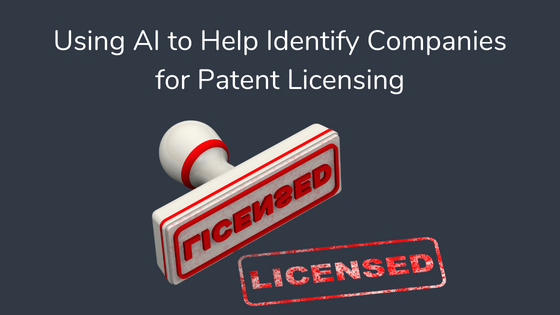
With the increase of filed patents worldwide, locating meaningful information in this ever-growing dataset is getting more complex and time-consuming.
Artificial intelligence (AI) plays a critical role in simplifying this process. From providing better patent classification performance to retrieving more relevant documents, AI offers great accuracy and exceptional quality in less time with less human effort.
AI can also help bring a patent idea to market by identifying patent licensing and synergistic collaboration opportunities.
Monetizing a patent can be challenging. An alternative to commercializing your invention is entering a licensing agreement with an established company. This reduces your investment and saves you the trouble of producing, marketing, or selling your product or technology.
Patent licensing and collaboration have become significant sources of revenue for patent holders. IBM, Microsoft, Ericsson, and others generate over $1 billion every year in licensing revenues. At its peak, Qualcomm earned over six billion dollars in licensing revenue.
Options for finding partners include:
These companies may need to license a patent in order to refine their own inventions.
For example, if you have a patent on an improved battery, electrical vehicle companies may need your invention to enhance the performance of their vehicles.
If an enterprise has patents on the inputs you need for your invention, you may be able to form a relationship to exploit both sets of patents.
You could, for example, enter into a:
This relationship could help both of you dominate your market through cooperation rather than competition.
Companies with products that compete with your patented invention might have an interest in licensing or purchasing your patent. Bear in mind however, that a competitor’s primary interest in your patent might be to prevent products based on that patent from reaching the market.
In the above cases, you’re seeking companies that want to patent concepts similar to what you have already patented.
In some cases your patents may have even been used to reject these companies’ patent applications. This might increase the odds of a relationship because these companies might already be familiar with your patent.
The best path for exploiting your invention will depend on many factors including:
Based on these factors, you should be able to identify some potential licensees or partners.
AI technology can be a huge asset when it comes to finding patent licensees and collaborative partners. It does this by searching for subject matter related to your patented inventions. It can then research the attributes of the applicants. For example, it can identify startups and distinguish between competitors and non-competitors.
PQAI is an open-source library of tools that use AI to search and evaluate patent documents. These tools are often used before filing a patent application to conduct prior art searches and assess the likelihood of obtaining a patent.
But PQAI’s powerful AI engine can also identify potential licensees, partners, and opportunities by identifying companies with similar technology. PQAI can do this because it can find similar concepts even if the documents do not use the exact language used in the search query. It can also process many documents and identify which have the greatest relevance.
Step 1: Go to the PQAI search engine. Add the abstract of the patent to be licensed into the search query. You can also enter some keywords or any search query in plain English in accordance with your patent.
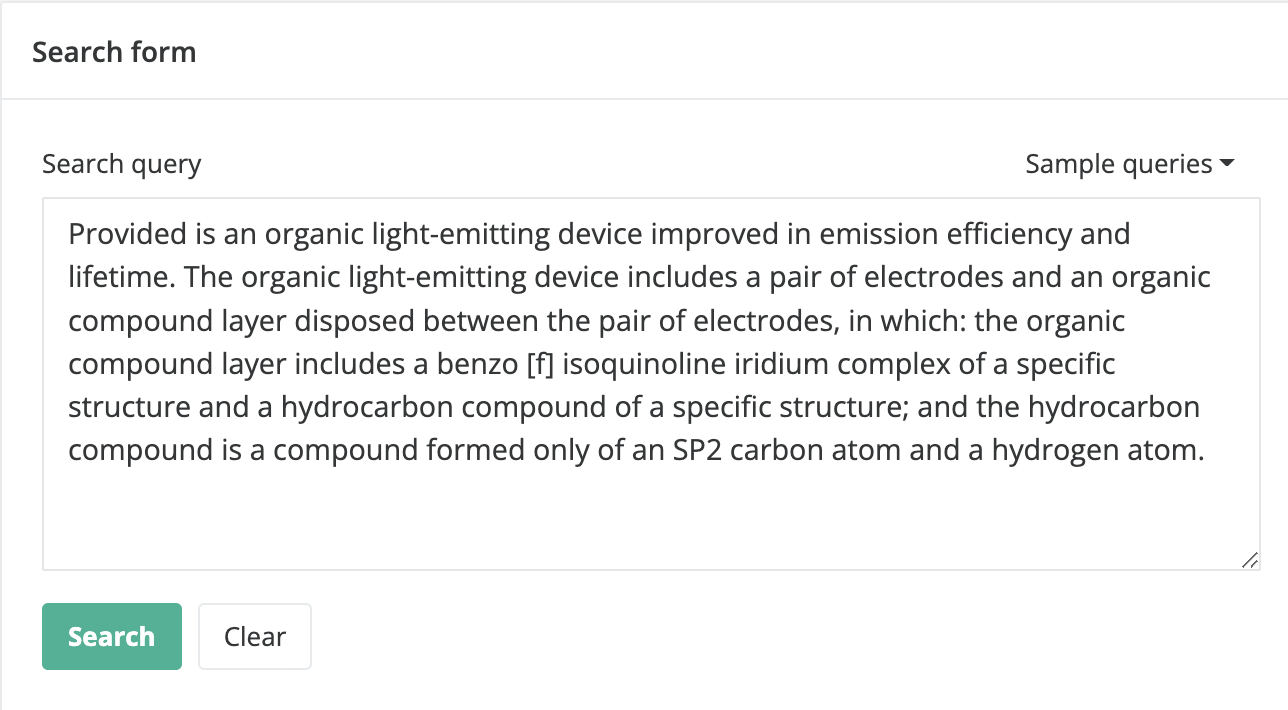
Step 2: Click on the “Insights” Tab.

Step 3: The Insights tab will produce a list of companies filing patents in similar areas. The list of companies that PQAI presents is not exhaustive. It’s merely a representation of what’s possible. We need to train the AI engine to provide more helpful results.
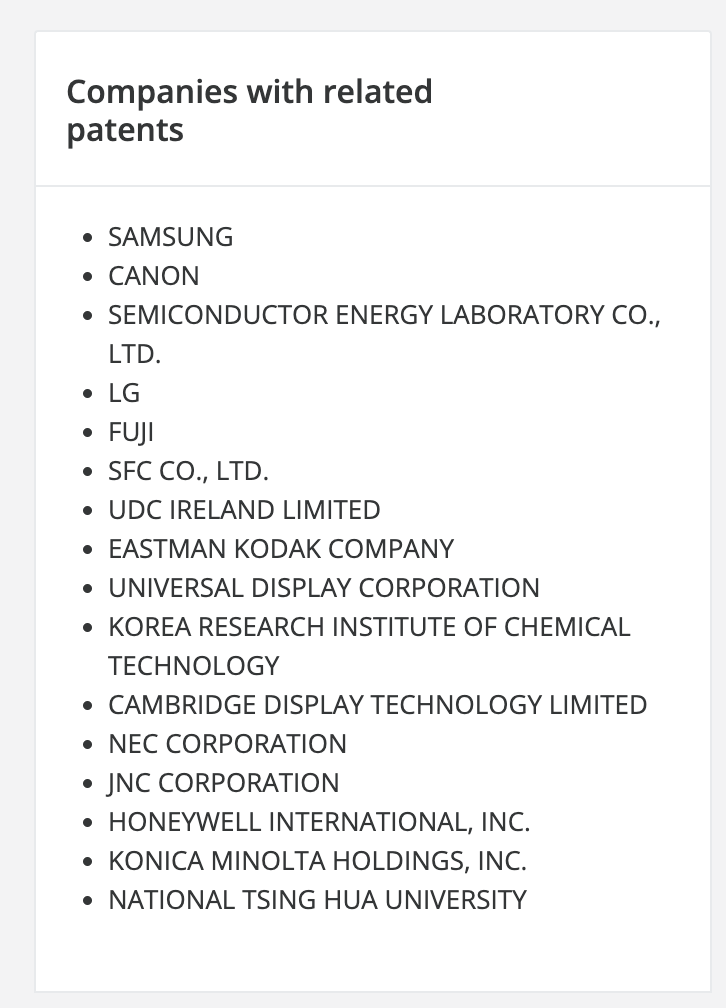
We conducted three case studies using real-life situations to show the power of the PQAI engine when looking for licensees and partners. Kindly bear in mind that these case studies were conducted using the back end of PQAI (roughly 2,000 search results) and not the front end interface (roughly the top 100 search results).
When looking for a partner, you must find enterprises interested in the same or similar technology as your patent.
In 2013, Canon invented a method for improving the emission efficiency and lifetime of OLEDs by using a layer of organic aromatic hydrocarbon compounds. In 2019 Canon secured a European patent on this technology, EP2939288B1.
We used PQAI to identify companies that filed patents on similar technologies by searching for the abstract from Canon’s patent. The search results returned Samsung, LG, NEC, Panasonic, SEL, Tianma, Sumitomo Chemical, Japan Display, Universal Display, Idemitsu, Foxconn, and Toray.
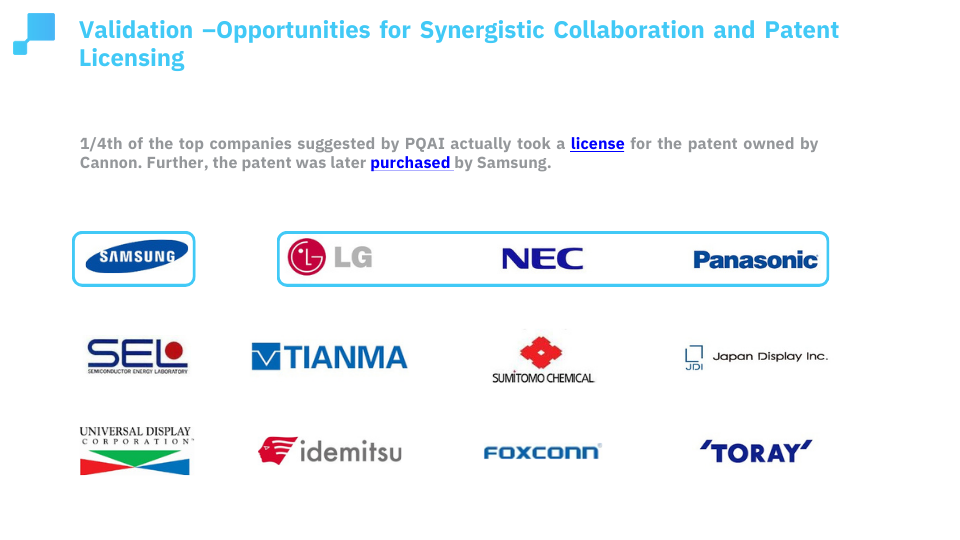
PQAI correctly identified potential partners. As it turned out, one-quarter of the companies returned by PQAI had licensed the patent from Canon. In fact, Samsung eventually bought the patent.
Additionally, when we studied the patents of Canon’s licensees, we found that these companies have patents in similar technology as Canon.
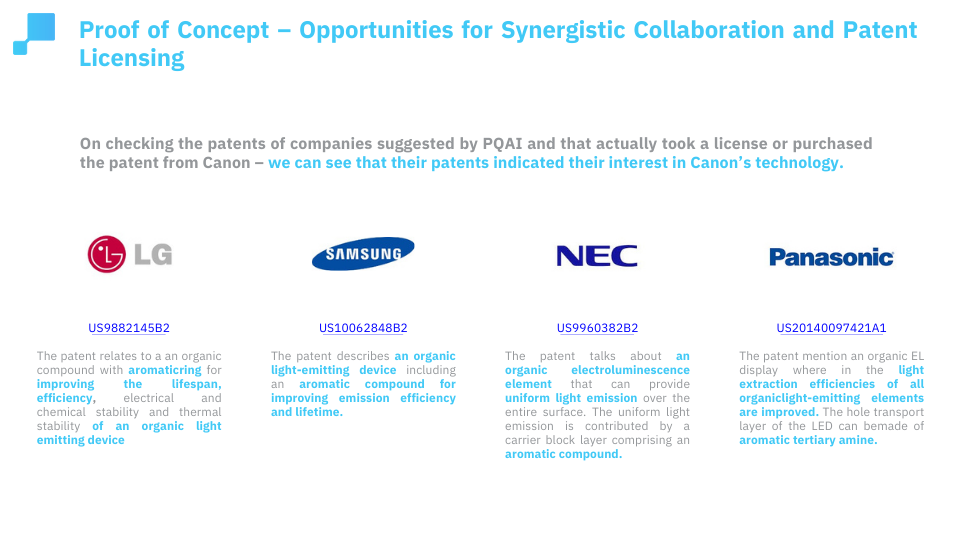
Sometimes, a startup company has a disruptive solution that can benefit an established company.
In 2018, Nestle was researching dietary supplements with collagen. They invented a powder containing buffer salt and amino acid. This powder helped prevent the protein from denaturing or coagulating when the dietary supplement was combined with a protein like collagen. Nestle filed a European patent application for its invention, EP3873236A2.
We used PQAI to search for companies filing patents for technology similar to Nestle’s application. We filtered the search to identify patents from start-ups by restricting the search results to small and medium companies that had filed for the first time within the preceding five years. The search results returned three companies: Vicenna, Vital Proteins, and iSatori.
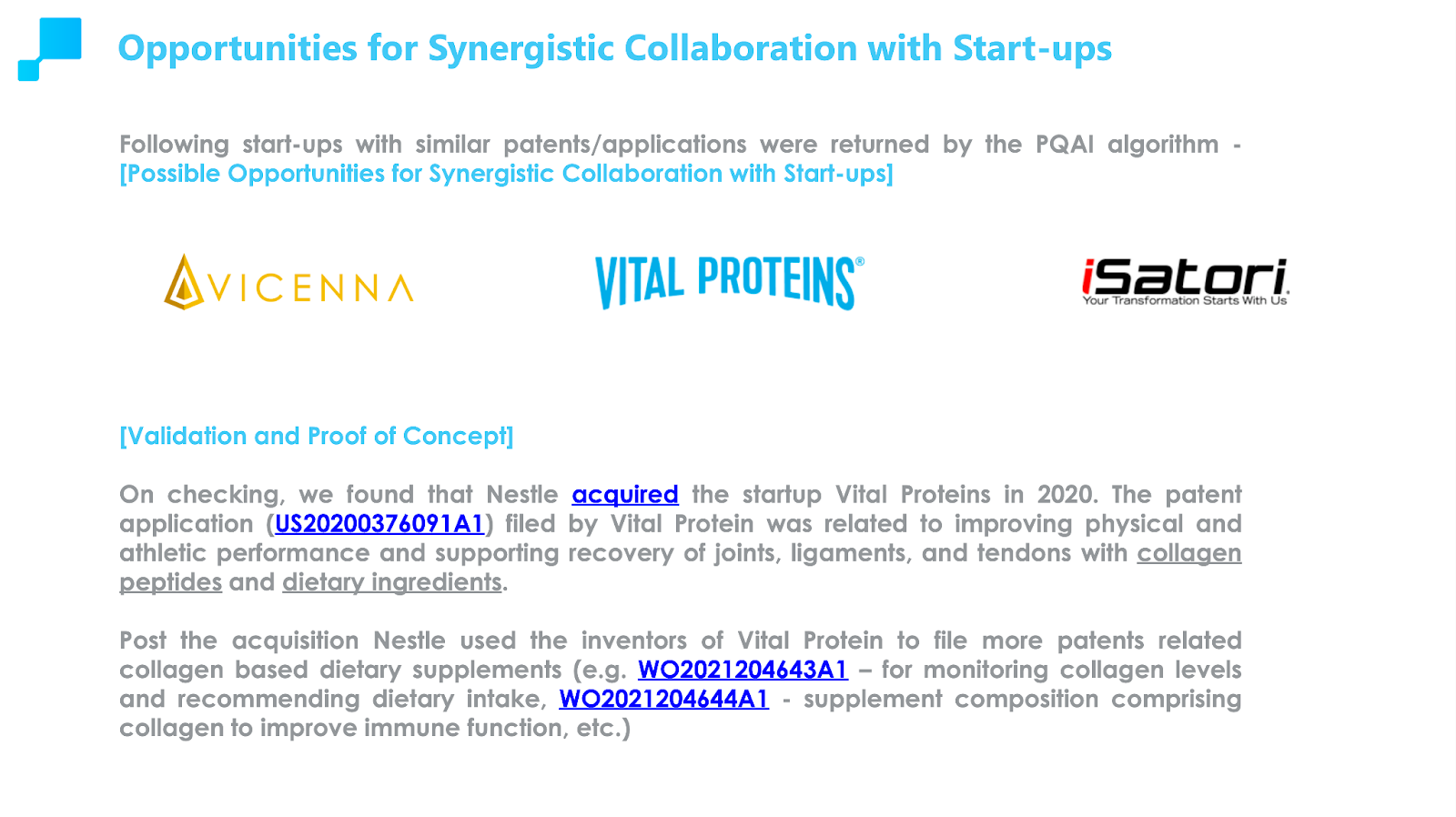
Once again, PQAI correctly identified potential partners. Nestle acquired Vital Proteins and after the acquisition, it filed two additional patent applications for collagen-based dietary supplements, WO2021204643A1 and WO2021204644A1.
Companies across a supply chain sometimes seek solutions to the same industry problem, and they often innovate in the same stage of the supply chain.
Nestle developed a process for manufacturing milk powder by spray drying fresh milk followed by a homogenization process before evaporation. This process solved the problem of high viscosity during production. The company secured a patent on this process, EP1259117B1.
We used PQAI to search for companies that were working on similar technologies. The search results included several of Nestle’s competitors—Kraft, Nabisco, Danone, and Unilever. But it also returned two businesses in the supply chain—packaging company Tetra Laval and chemical company Stauffer Chemical.
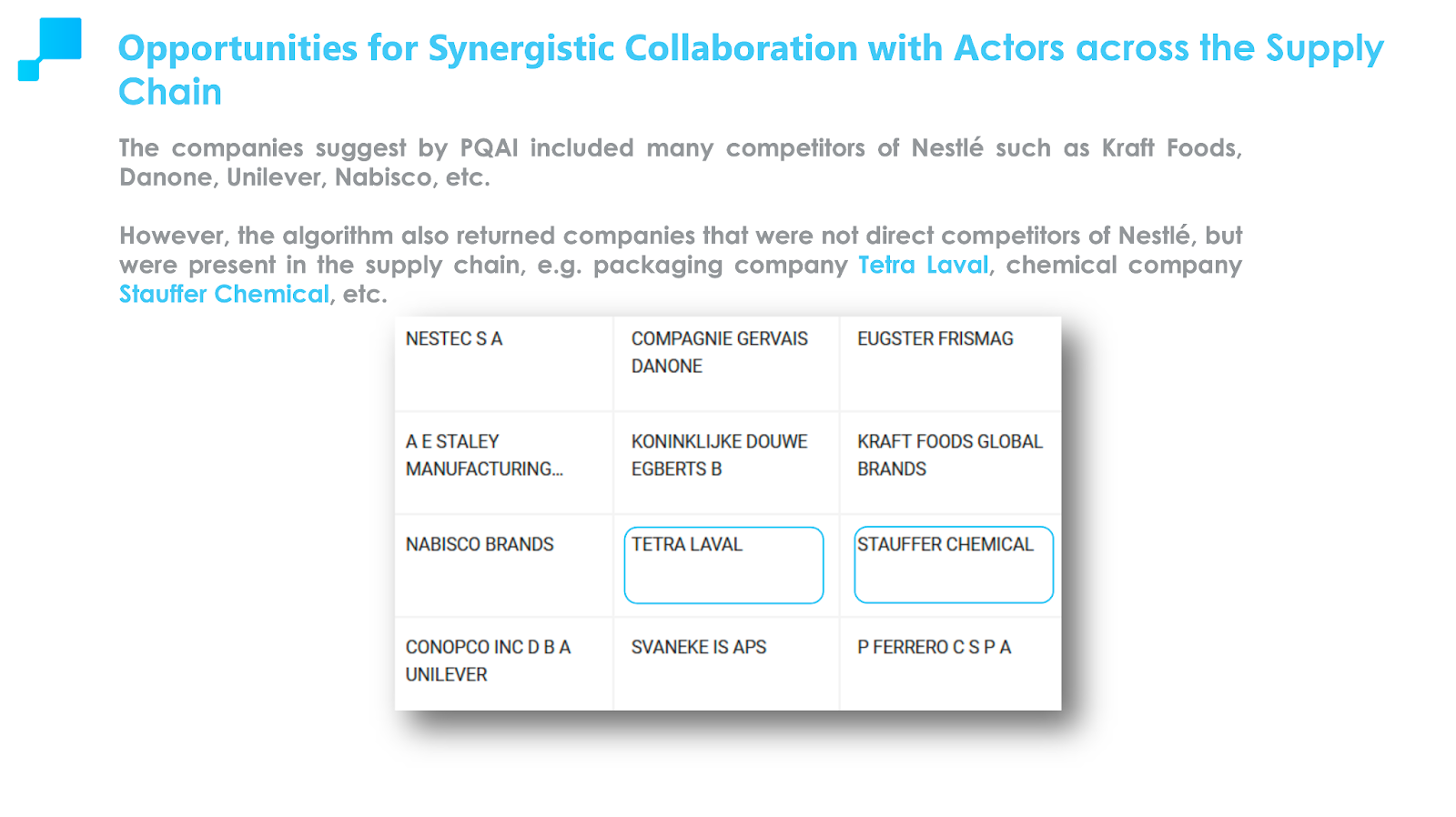
Tetra Laval, in particular, appeared to be a good potential partner for Nestle:
While Tetra Laval has not developed a relationship with Nestle for producing milk powder, all the ingredients for a good partnership exist.
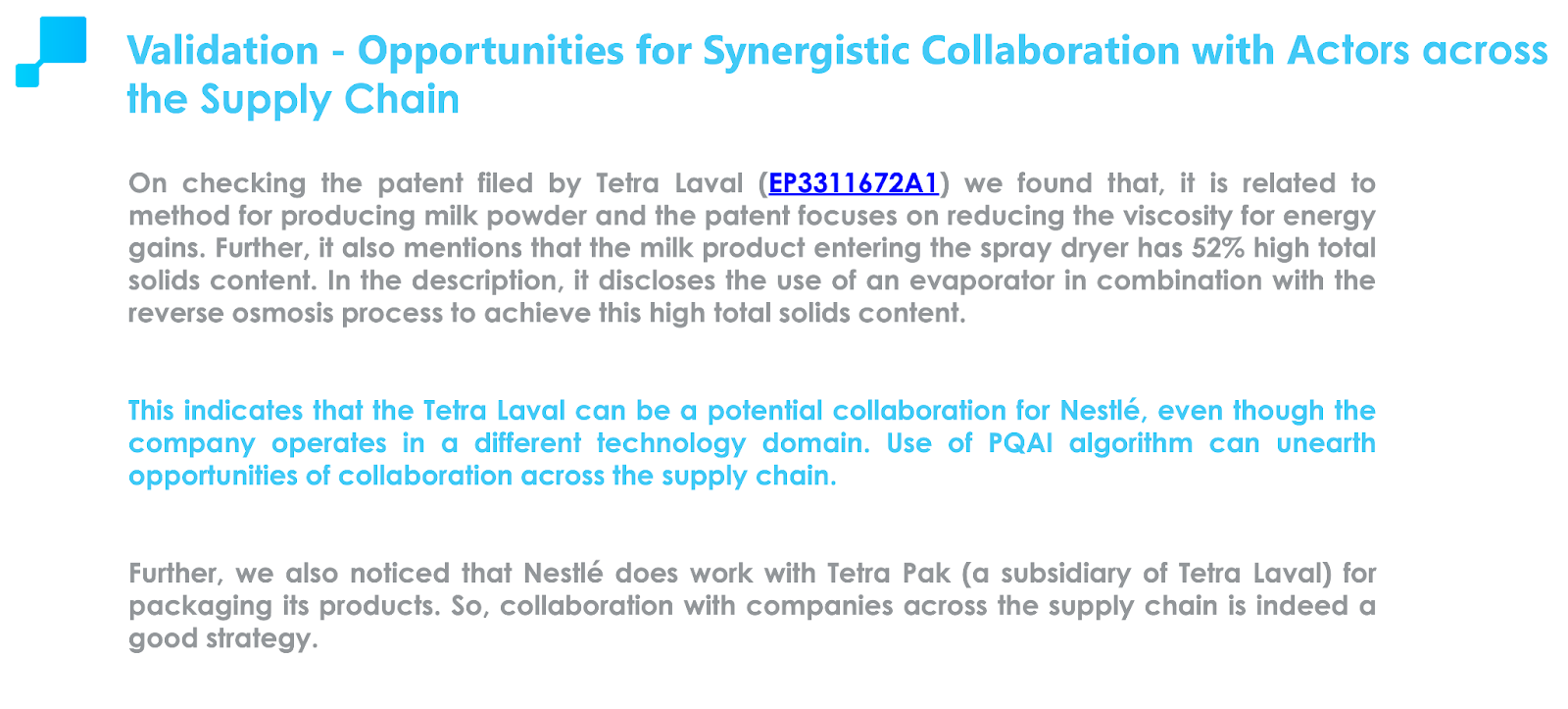
Identifying companies for licensing or partnerships can be arduous, research-intensive and time-consuming. Potential collaborators can leverage PQAI to create advanced tools that find excellent patent licensing and synergistic collaboration opportunities with greater speed and accuracy.
PQAI has laid the foundation for potent AI-powered patent tools. As a non-profit open-source initiative, its mission is to accelerate innovation and improve patent search quality. PQAI is dedicated to establishing an open-source forum of IP tools that will drive critical changes in the IP ecosystem in a manner similar to what Linux did in computing.
To learn more about PQAI, visit PQAI’s website. And to become a collaborator in this open source project, review PQAI’s GitHub Directory.
©2024 Project PQAI | All Rights Reserved